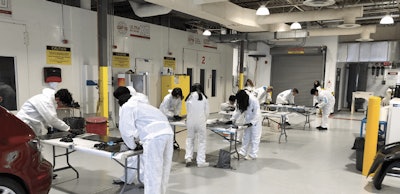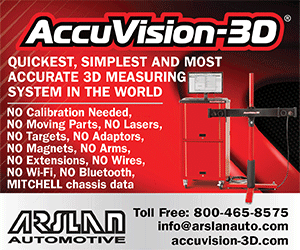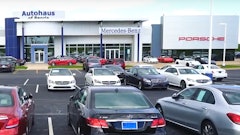
The automotive industry through the eyes of emerging technicians
Story by SARAH PERKINS
While the automotive industry has seen its fair share of growth and shifts over the previous decades with changes in procedure, technology, and global cultural mindset, the goal of automotive educators remains the same: preparing students with a love of the automotive trades for the workforce.
Collision Repair magazine recently sat down with Jean-Marc Julien, Ben Hart, and Chris Chin—three automotive educators—to get their incites and opinions on what students want and need when it comes to their education, as well as how to prepare for an industry that offers a world of learning possibilities alongside a foundation of both tradition and radical change. When speaking with Jean-Marc Julien, a collision repair instructor at the Canadian Welding Bureau (CWB Group), he noted that despite a “new era of collision repair,” “it’s still the student that likes working with their hands” that comes to learn.
The literal hands-on approach to training is still needed to entice students to enter and stay in the industry, as well as offering a more symbolic image of creating a learning style that encourages helping hands between generations of technicians, he said.
“As we move to today’s vehicles and the technology that’s built into the cars, the younger generation getting into the industry still has that aptitude to work with their hands. But, because of their experience with technology, whether it be video games, the internet, and all these apps that are out there, the technology really enlightens them to come into an industry where they’re needed.”
“So, our focus when we do training with young people is to really clarify that this is still hands-on work, but that there’s a lot of technology involved. That requires the next generation, if you will, of technicians that come in with that experience, to help out the older technicians. And then vice versa, the younger technicians learn from the older technicians.”
Julien outlined how the rise in EV technology will be an important stepping-stone for both older and younger technicians to learn and grow together. It will also serve as an opportunity to learn a variety of diversified skills.
“The electric vehicles that are coming out require a specific certification from every manufacturer to just be able to disconnect and service it for collision repair.”
“Another field involved in the collision repair aspect of EV technology is the electric vehicle service technician. Manufacturers are demanding that a technician who is not trained in EV technology not touch cables, batteries or the vehicles in general.”

Julien also noted that the cultural and physical spaces of shops have largely changed from the 80s and 90s. The shops are “less like dungeons” and have instead become spaces that he wouldn’t mind letting his kids enter because of the steps taken towards diversified growth.
“It’s not just collision repair; it’s estimating, insurance companies, parts departments. I mean, there are so many different aspects possible in one career—painting, prepping— whatever it piques your interest.”
Furthermore, when speaking with Ben Hart, an auto body instructor at the Southern Alberta Institute of Technology (SAIT), he outlined how “every generation of learners is unique, and I think what we are seeing with a lot of up-and-coming learners today is a different motivation.” Specifically, Hart noted the difference between generations.
“Typically, in the past, the average tradesperson got into the trade because they really liked cars. Maybe they had hobbies around vehicles like racing or fixing them—performance modifications or whatever.”


“Now, however, the vast majority of students don’t have that intrinsic motivation towards automotive interests. More people are coming in because it is a viable option for training.” “As an example of that, we’re seeing more and more students come into the trade that don’t even have driver’s licenses. In the past, that would have been unheard of.”
According to Hart, there are benefits to both approaches with ‘car people’ students having a special interest in vehicles and ‘non car people’ tending to look at repairs more systematically.
“When you have a bunch of technicians who are “car people”, they might each have their own specific interests. Someone might be into muscle cars, another might be into tuners. This is a broad generalization, but these days there tends to be a more equal view of vehicles and repairs—less bias and less emotion.”
But, despite this initial specification, for Ben Hart, “as an educator, what I try to do is prevent teaching too much specialty. The reason for that is because there are so many areas in our industry that one can specialize in these days.”
Like Julien, Hart notes that “the reality is that with our apprenticeship model that we are teaching, there’s just not enough time to teach all those details. Even if there was, the fast pace of technology in our trade makes it almost impossible to keep up.”
“If I teach our students the intricacies of all of these vehicles in two, three years’ time, all of that training will be outdated anyway.” “We try to teach a more generalized approach, but part of that approach is training the awareness of those specialties and modern technologies.”
Lastly, when speaking with Chris Chinn, a professor at Centennial College, he also echoed Jean-Marc Julien and Ben Hart’s perspective that the automotive industry has expanded to offer students a wider range of skills and interests from earlier decades. “You don’t have to be a bodyperson or a painter. You can be a welder, an estimator—we give them a broad range of different things to spark their interest, because [the students] all have different interests. Some are passionate about working with cars, some are just looking for a good paying job.”
Chinn also asserted the importance of building safety habits for students stating that: “what we generally do is give them the full experience, starting with safety—personal safety and safety around the shop. Then we start with hand tools and get into metal, how it moves and things like that.”
Like Julien, Chinn also stresses that, “we’re right on the cusp of this trade shedding off its bad reputation, that it’s a ‘dirty trade.’” He tries to work with students to understand the freedom of the industry and that, “it doesn’t matter what you do; you can take different aspects of this trade and kind of just go from there.”
His teaching process includes letting students begin to learn foundational skills and then, according to Chinn, “that’s when you see them start to decide, ‘Well, is this for me?’, and we give them the options. If you finish this program, you will be exposed to so many different things.”
Chinn finished by stating that ultimately, educating in the trades is about maintaining the bigger picture.
It is about creating a system of continuous learning that, regardless of any future shifts or changes in the automotive industry, can, on the one hand, provide students with a necessary drive and passion, and on the other hand, can provide students with the necessary technical and professional skills needed for success.
In Chinn’s words, it is about building an environment of learning, growth and understanding that can provide students with a holistic approach to learning and that will carry them “from cradle to grave.”






















